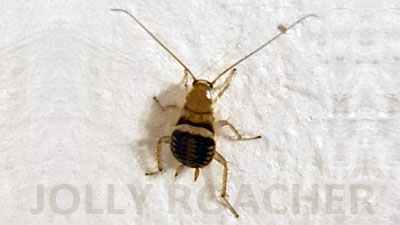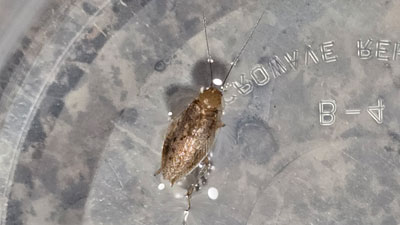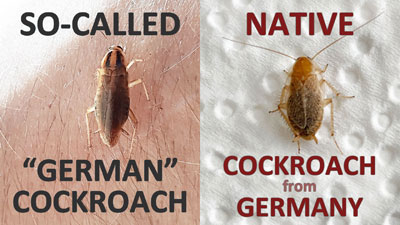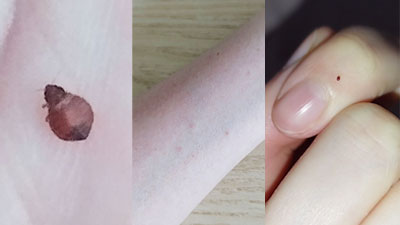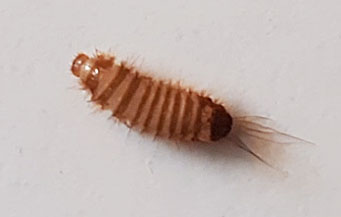In one of the videos, I talked about a very interesting case of cockroach recognition. One of my viewers, the girl from Germany, then found one of the forest cockroaches at home – either tawny cockroaches, or Ectobius vittiventris, or Ectobius lapponicus:
Here is the text version for those who like to read more than watch videos. A young woman sent me three photographs of insects she found in her apartment. This one she found first:
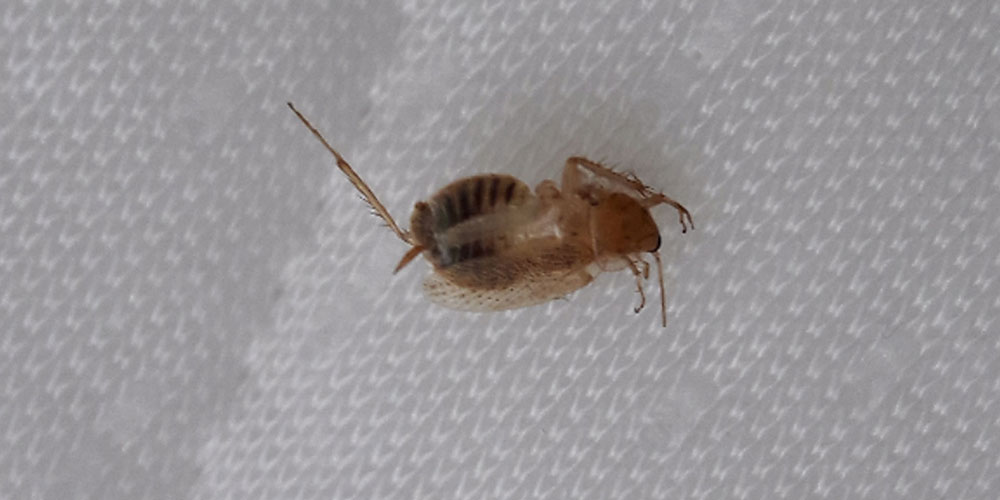
Then, when she was renovating house, she found the already dry remains of another one:
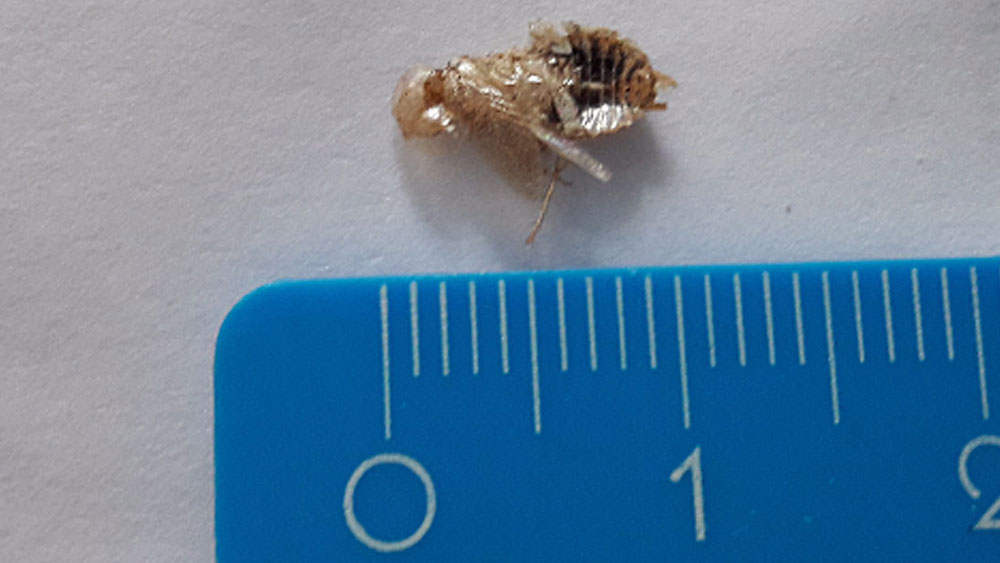
Notice how careful she was in documenting these remains – she took all the photos next to a ruler to make it easier for me to estimate the size of the insects and identify them:

Despite the fact that these are no longer even living insects, it is quite possible to identify the species from these remains.
Why it is clear, that these were exactly cockroaches?
At first glance at the remains, it is clear that these are cockroaches, since all individuals have visible cerci – small appendages at the end of the abdomen:
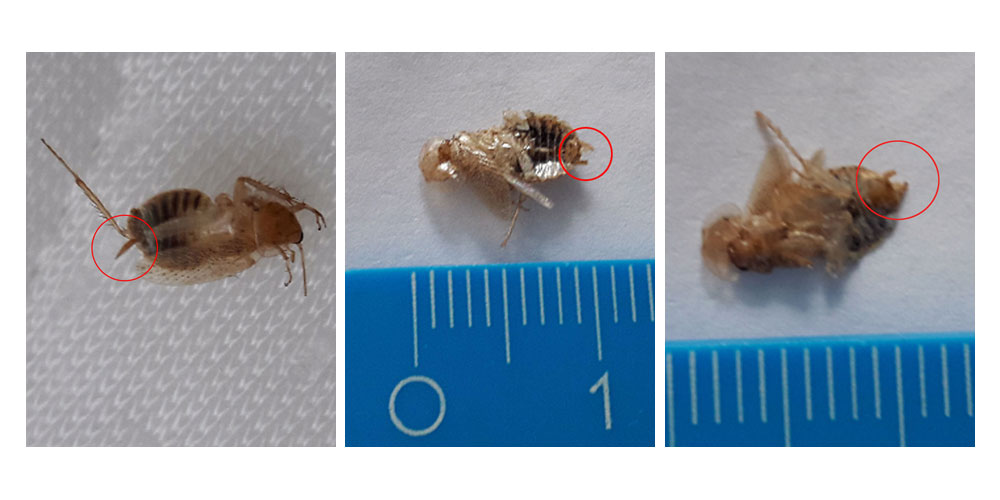
Of all the insects found in homes, only cockroaches, crickets, silverfish and earwigs have cerci.
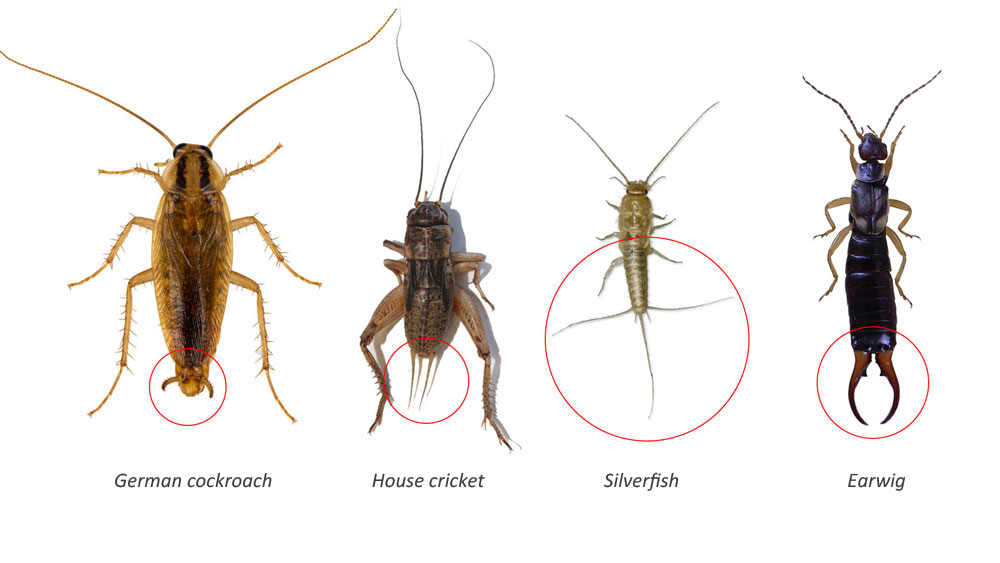
You will agree, all of them are difficult to confuse with each other. And those in our photos are definitely not crickets, definitely not earwigs, and definitely not silverfish. These are definitely cockroaches.
Trying to recognize species of these cockroaches
But identifying the species of cockroaches turned out to be more difficult. Firstly, there were no live insects in front of us, but already dry remains, and secondly, these remains were not similar to any common synanthropic cockroach.
This is definitely not a red cockroach, since it does not have longitudinal black stripes on its pronotum:
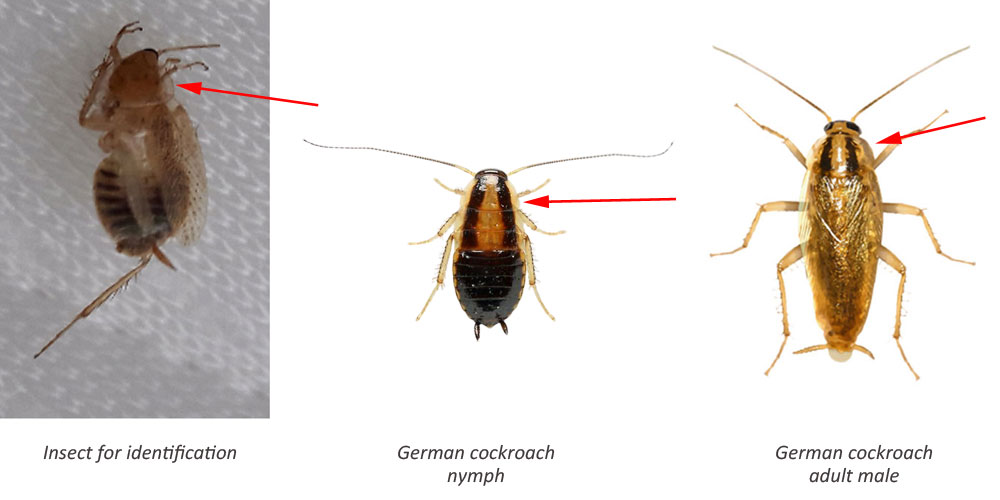
This is definitely not an oriental cockroach as well, because it has too light coloration and too long wings for an oriental cockroach:
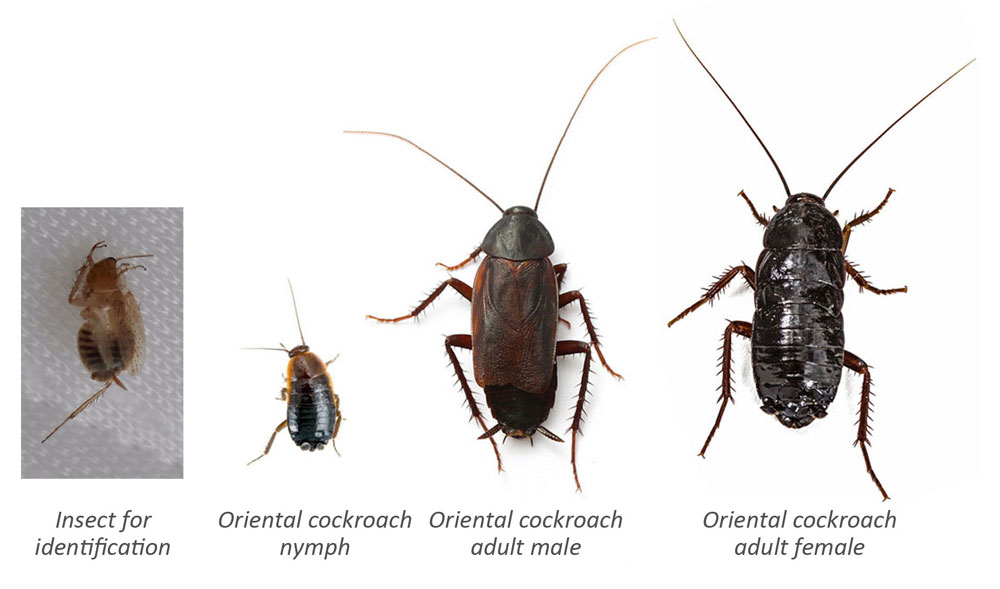
Finally, this is not a brown-banded cockroach, because it has no transverse stripes on the body, and its wings are colored completely differently – they are translucent, with noticeable dots. Brown-banded cockroaches have brown wings without dotted patterns:
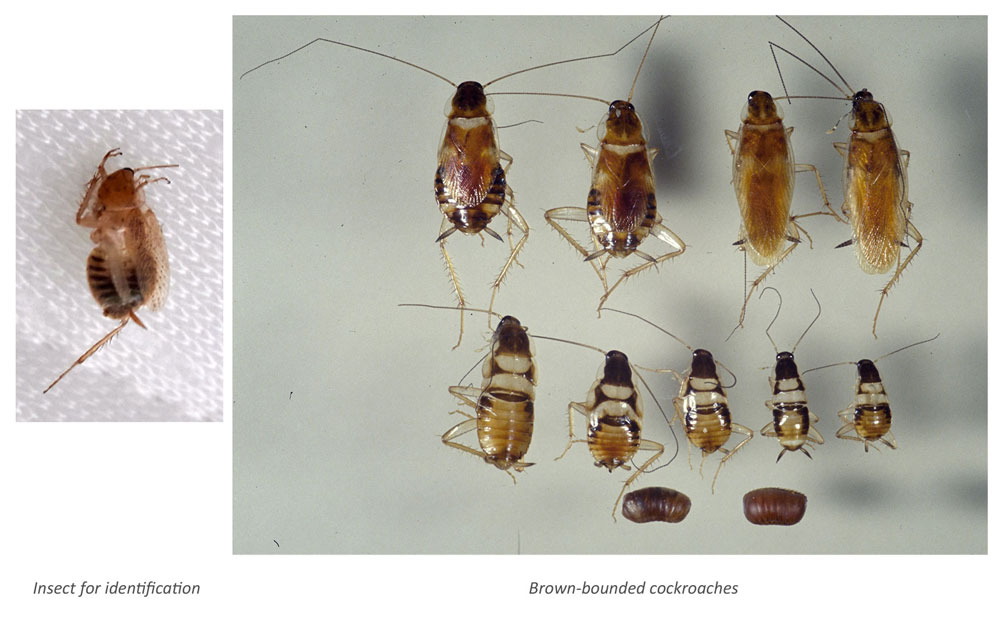
Most closely our specimens resemble forest cockroaches of the genus Ectobius. For example, compare one of them to a female dusky cockroach Ectobius lapponicus:
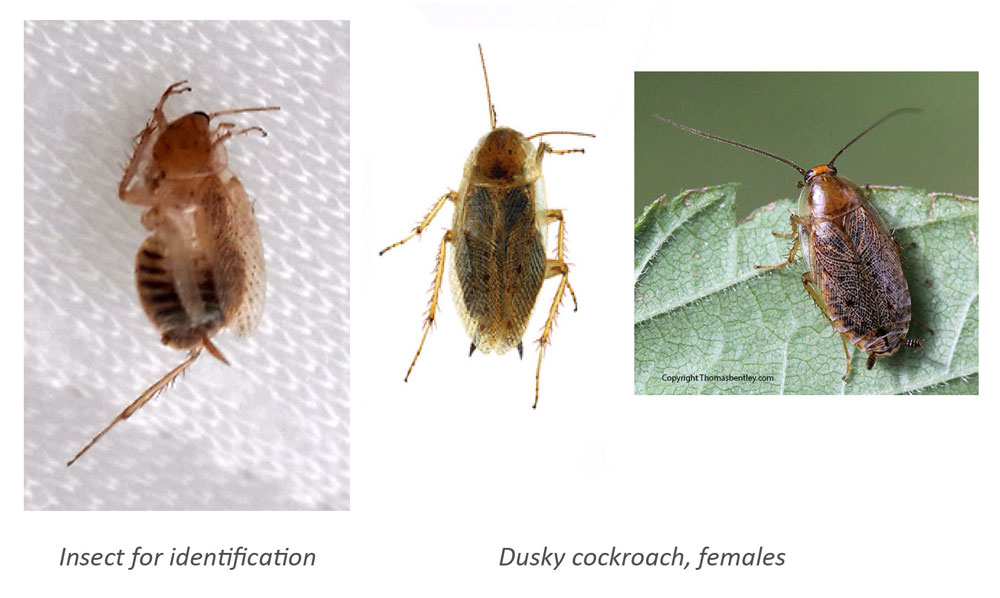
Other possible candidates are the tawny cockroach and the amber wood cockroach. Their females are also very similar to our insects.
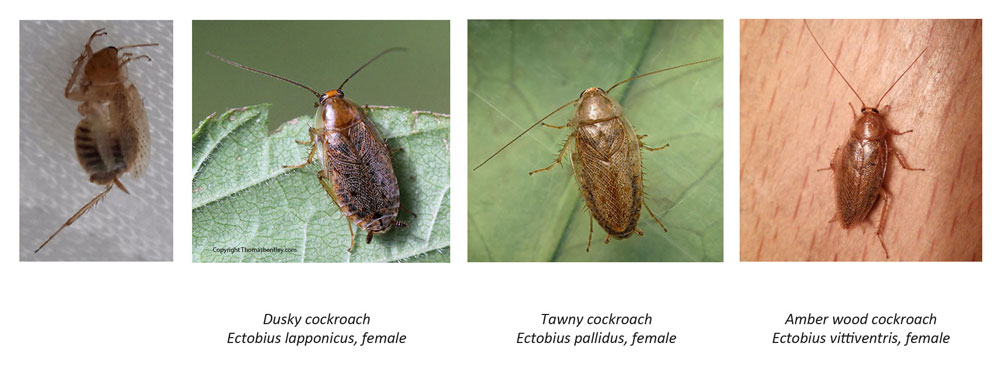
All these species differ from each other with certain difficulties, and it will not be possible to accurately recognize their species from photos of already dead insects. But there is really no need for this. Any cockroaches from the genus Ectobius – either dusky, or amber wood, or tawny cockroaches – in house are not pests, do not live permanently in houses and apartments and do not spoil food here. They end up in human housing by chance, simply because they live near houses and crawl or fly inside in the same way as butterflies flocking to the light or stink bugs do in their migrations.
Therefore, no matter what species of the genus Ectobius the cockroaches found by the viewer belong to, they are not pests and there is no need to worry about finding them in your home.
Unfortunately, I did not ask the girl what kind of house she lives in — in an apartment building or in a private one – and whether there are any green spaces near her house, or maybe a forest or meadow. As a rule, such cockroaches are most often found in those houses near which there are numerous bushes and trees – the natural habitat of these insects. And if such cockroaches wind up at home, it is better to just return them to where they came from.
So, remember that cockroaches in the house are not always a cause for concern. Sometimes when you find them, you do not need to immediately call the pest control service. Just take a closer look at them and find out whether they are pests or just occasional wild guests. And if you still have doubts about identification, take a photo of them, shoot a video and send them to me – together we will figure out exactly what is best to do with them.

